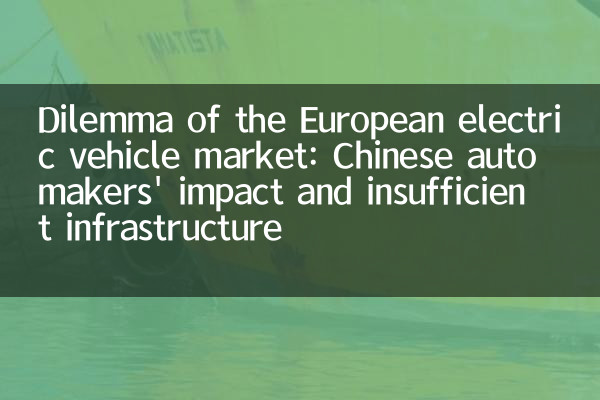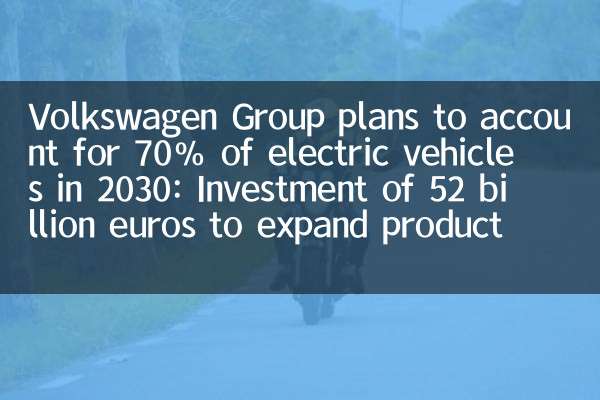Dilemma of the European electric vehicle market: Chinese automakers' impact and insufficient infrastructure
In recent years, the global electric vehicle market has developed rapidly. As a major center of the traditional automobile industry, Europe faces multiple challenges in the popularization of electric vehicles. On the one hand, Chinese automakers have entered the European market with their cost advantages and technological innovation; on the other hand, insufficient local infrastructure in Europe has restricted the further promotion of electric vehicles. The following is an analysis of the current situation of the European electric vehicle market that has been hotly discussed across the Internet in the past 10 days.
1. The strong impact of Chinese automakers

Chinese electric vehicle brands have rapidly increased their share in the European market in recent years, and relying on their price advantages and intelligent technology, they have put huge pressure on European local car companies. The following is a comparison of some data of the European electric vehicle market in 2023:
| Car companies | European sales in 2023 (10,000 vehicles) | Year-on-year growth | market share |
|---|---|---|---|
| BYD | 15.2 | 120% | 8.5% |
| SAIC MG | 12.8 | 95% | 7.2% |
| public | 32.5 | 15% | 18.1% |
| Renault | 10.3 | 8% | 5.8% |
From the data, it can be seen that the growth rate of Chinese brands such as BYD and SAIC MG far exceeds that of European local automakers, and their market share has risen rapidly. European consumers have significantly improved their acceptance of Chinese electric vehicles, especially in terms of cost-effectiveness and intelligent configuration.
2. Insufficient charging infrastructure in Europe
Although European governments vigorously promote electric vehicles, the speed of charging infrastructure construction is far from keeping up with demand. The following is the ratio data of charging piles and electric vehicles in major European countries:
| nation | Number of public charging piles (10,000) | Electric vehicle ownership (10,000 vehicles) | Car pile ratio |
|---|---|---|---|
| Germany | 8.7 | 220 | 25:1 |
| France | 7.2 | 180 | 25:1 |
| Norway | 2.1 | 75 | 36:1 |
| Netherlands | 4.5 | 120 | 27:1 |
The EU had previously proposed the goal of building 3 million public charging piles by 2030, but progress is currently slow. Uneven distribution of charging piles, slow charging speed and high installation costs have become the main bottlenecks hindering the popularization of electric vehicles in Europe.
3. European car companies’ response strategies
Faced with the competition and infrastructure of Chinese automakers, local European automakers are actively adjusting their strategies:
1.Accelerate the transformation of electrification:Volkswagen, Mercedes-Benz and other automakers announced plans to stop production of fuel vehicles in advance and increase investment in electric vehicles research and development.
2.Government subsidies increased:Germany, France and other countries have extended subsidies for electric vehicle purchases and introduced incentive policies for charging pile construction.
3.Local supply chain construction:European car companies are accelerating the construction of battery factories and reducing their dependence on Asian supply chains.
4. Future prospects
The European electric vehicle market is at a critical turning point. The rise of Chinese automakers has injected vitality into the market, but it has also forced European automakers to accelerate their pace of innovation. At the same time, the shortcomings of charging infrastructure need to be compensated urgently, otherwise it will seriously restrict the popularity of electric vehicles in Europe. In the next few years, the competitive landscape of the European electric vehicle market will be more diversified, and policy support and infrastructure construction will become key factors that determine the success or failure of the market.
Overall, opportunities and challenges in the European electric vehicle market coexist. Only through the joint efforts of governments, businesses and consumers can the goal of sustainable electrification transformation be achieved.

check the details

check the details